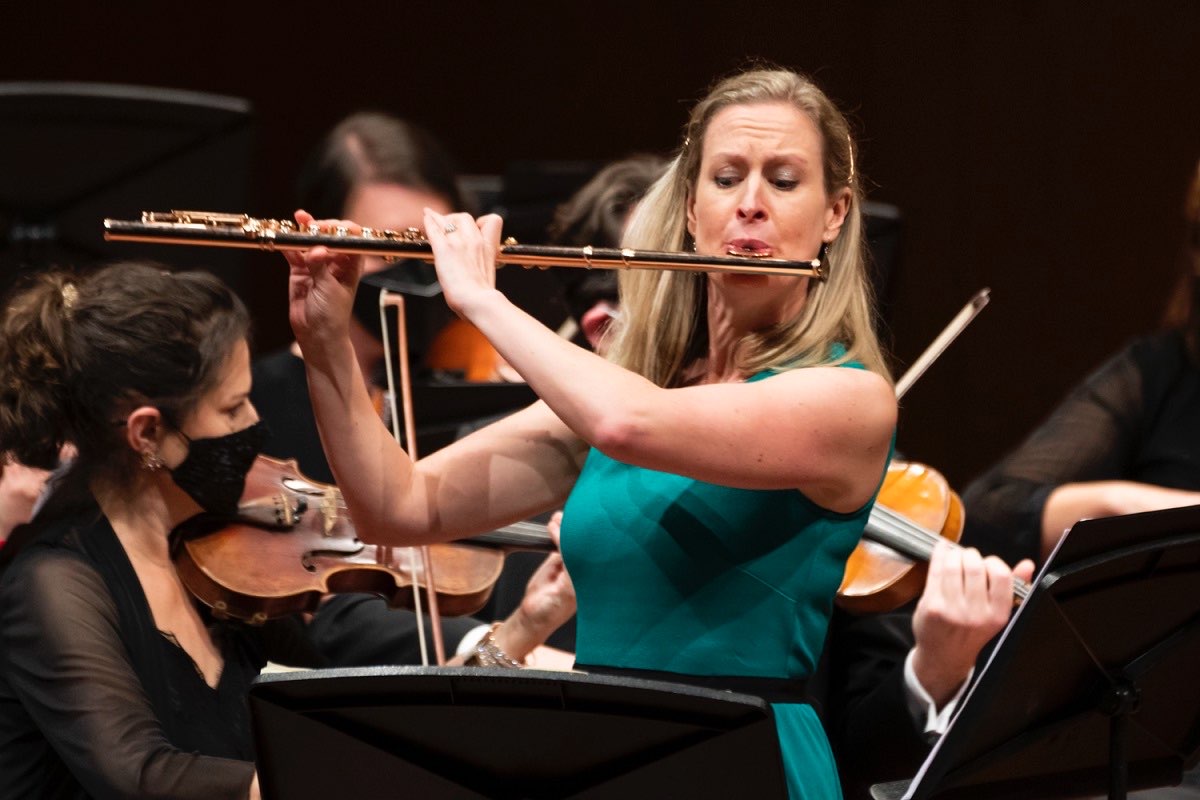
Music / “Miracles in the Age of Reason”, Canberra Symphony Orchestra. At Llewellyn Hall, May 19. Reviewed by TONY MAGEE.
FOLLOWING in the footsteps of Leopold Stokowski and Isaiah Jackson, guest conductor Benjamin Bayl abandoned the traditional “baton” and instead used both hands to cajole and seduce some of the finest music making from the Canberra Symphony Orchestra I’ve heard in years.
However, unlike his predecessors, Bayl conducts with clipped precision. Each hand movement elicits from the players precise and distinct combinations of sweeping dynamics, diminuendos, gentle phrases, joyous climaxes and much more.
Opening with a suite from Rameau’s opera “Plataea”, the orchestra adopted a style of French Baroque ornamentation by approaching trills and mordents from above. It was a most expressive performance of this charming and delightful work.
The “Flute Concerto in D minor, Wq. 22” by CPE Bach featured soloist Emma Sholl, whose tone production was rich and sonorous. The finale, marked “Allegro” hinted at “Winter” from Vivaldi’s “Four Seasons” at times.
In this, Sholl played the many lyrical and fast-moving passages in a beautifully crafted manner. Conductor Bayl contributed to the continuo section of the orchestra from the harpsichord, the entire ensemble creating a rich and commanding accompaniment to this masterful work.
Australian composer Richard Meale (1932-2009) composed “Cantilena Pacifica” in memory of his dear friend Stephen Wilson. Featuring Kirsten Williams on solo violin, the orchestra played a gentle rhythmic ostinato, wavering between major and minor chords, sometimes also ones with oblique harmonies.
Williams played her part with great expression and feeling, capturing this gentle homage to the departed with respect and grace.

The final three symphonies of Mozart – numbers 39, 40 and 41 – define the Classical Symphony at its height.
Music scholars around the world have established there are at least another 20 symphonies “probably” by Mozart that have never been numbered in that group, although they have been assigned Köchel numbers.
In addition three of the “established” 41 are now known to be by other composers – 2, 3 and 37.
CSO captured the opening to “Symphony No. 39 in E-flat, K. 543” with curtain-raising grandeur. Bold timpani accompanied by majestic chords from the full orchestra gave way to a delightful melody in triple time, followed by a fiery and compelling “Allegro”.
Slightly marred by some ragged entrance points, the orchestra settled down to play this piece superbly, delivering a wide dynamic range.
The third movement featured wonderful clarinet duet work, an instrument Mozart was keen to show off, following years of vast improvements over its relatively primitive predecessor of the Renaissance and Baroque, the chalumeau.
Throughout the evening, it was clear the players felt very comfortable under the direction of Bayl, responding instantaneously to his clear and precise gestures. The entire concert was something to be treasured and adored.
Who can be trusted?
In a world of spin and confusion, there’s never been a more important time to support independent journalism in Canberra.
If you trust our work online and want to enforce the power of independent voices, I invite you to make a small contribution.
Every dollar of support is invested back into our journalism to help keep citynews.com.au strong and free.
Thank you,
Ian Meikle, editor








Leave a Reply